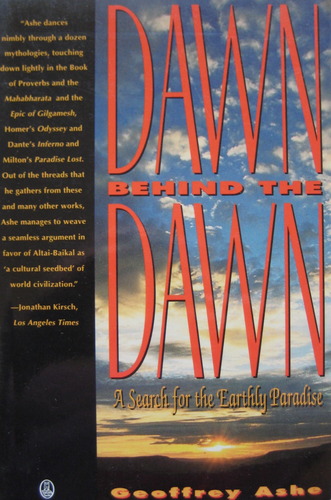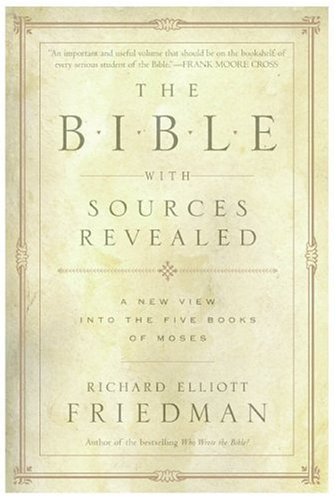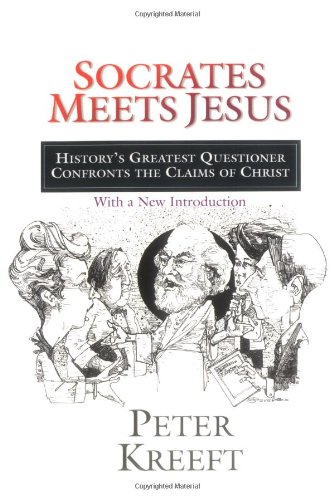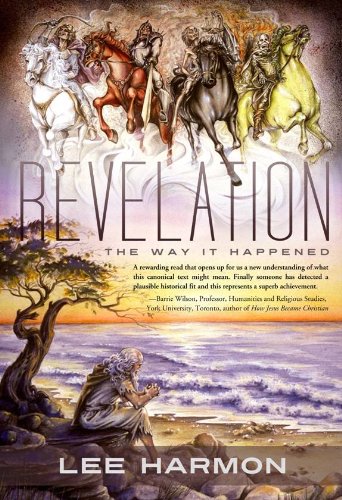1 Thess 5:2-3, Christ comes as a thief
For you know very well that the day of the Lord will come like a thief in the night. While people are saying, “Peace and safety,” destruction will come on them suddenly, as labor pains on a pregnant woman, and they will not escape.
//Paul’s teaching in the first letter to the Thessalonians promises that the coming of Christ is imminent, and will arrive suddenly and unexpectedly. Paul indicates that some of his audience will still be alive by the time Christ appears. But before the second letter to the Thessalonians is written, Paul seems to change his mind:
Now concerning the coming of our lord Jesus Christ and our assembling to meet him, we beg you, brethren, not to be quickly shaken in mind or excited, either by spirit or by word, or by letter purporting to be from us, to the effect that the day of the Lord has come.
Many scholars believe this second letter was not written by Paul. This difference in urgency between I and II Thessalonians provides the primary reason many remain convinced of the second epistle’s pseudonymity. In the first letter, Paul insists the end is near, so the Thessalonians need to remain vigil. In the second letter, “Paul” has apparently changed his mind, now arguing the coming of Christ will be delayed, not to occur until after a number of clear-cut signs serve as a warning.
Unless Christ has come back, the first letter to the Thessalonians was simply wrong. Might the second letter have a better track record? In light of recent world disasters, I leave you with this question: have the clear-cut warnings of “Paul” been fulfilled?
Got an opinion? 0 commentsBook review: Dawn Behind the Dawn
by Geoffrey Ashe
★★★
SPOILER ALERT
Seven. Seven, 7, seven. Most of the book is taken up with this mystical number, a number with little practicality to explain its lofty status. Our seven-day week, for example, derives directly from the Hebrew reverence for this number, but it’s clumsy; seven divides neatly into neither a 30-day month nor a 365-day year. Why not a five-day week?
As a scholar of Revelation, I’m certainly familiar with the number seven. Seven churches, seven seals, seven angels, seven trumpets, seven bowls of wrath, seven-headed dragons, and more. The number seven bleeds into the Gospel of John as well, with seven I AM’s and seven signs. But the mysticism of this number precedes Hebrew beliefs and is inexplicably common throughout several civilizations, dating back thousands of years.
The subtitle of Ashe’s book is “A Search for Earthly Paradise,” and while the analysis of the number seven is interesting, it isn’t worth half the book; it doesn’t bring us very close to paradise. More interesting is the author’s research into shamanism and the various myths of a northern mountain paradise, an exalted Eden.
In the end, uncovering an earthly paradise is revealed to be too lofty a goal; at best, the most the author uncovers is a distant memory of a golden age of female shamans, with implications about a cultural source or seedbed somewhere between Siberia and Mongolia, which may have been a sort of paradise of Goddess wisdom. By book’s end, even this has dissolved into a number of obscure theories about the origins of our myths and mystical numbers. I’m afraid paradise is forever lost, my friends.

1 Thess 4:17, the Parousia
After that, we who are still alive and are left will be caught up together with them in the clouds to meet the Lord in the air. And so we will be with the Lord forever.
//Virtually all Christians picture the parousia as an event where God-fearers are lifted up to heaven, to dwell with the Lord. Artwork abounds of this glorious moment, and the picture seems to match the verse above. But is that really what Paul meant? Let’s look at the meaning of the Greek words parousia, the arrival of Christ, and his apantesis, or reception, as used by Paul in Thessalonians to describe how the Christians will meet Jesus in the air.
Picture a king arriving as a visitor to a city. A cluster of citizens, a welcoming committee, go out to meet him, and escort him into the city. This is precisely how these Greek words are used elsewhere.
Perhaps we should turn to Revelation for clarification. In the Revelation story, the parousia occurs just before Christ begins his 1,000 year reign on earth. In other words, if we are to be “with the Lord forever” from that moment on, new life will at least begin on earth, not up in the sky.
So what are we doing up in the clouds, according to Revelation? Well, the New Jerusalem is about to float down to earth, and it is referred to as the bride of Christ. The adornment of the bride, as it settles upon Mount Zion, is God’s people. Thus, we can conclude that in the parousia, we fly up to the sky, welcome Jesus to earth, enter the New Jerusalem, and float back down inside the city of God.
Yes, I know this is very different than current Christian theology. I don’t make this stuff up!
Got an opinion? 0 commentsBook review: The Bible With Sources Revealed
by Richard Elliott Friedman
★★★★
The first five books of the Bible are traditionally understood to have been written by Moses. In places, Jesus appears to confirm this. Most critical Bible scholars since the late 19th-century, however, have recognized at least four different contributors of the books of Moses:
A text known as J was composed during the period when the kingdoms of Israel and Judah were divided. J was written by an author living in the southern kingdom. It’s known as J because it refers to God by the name of YHWH (Jahwe in German).
A second text known as E was composed in the same period, by a priest living in the northern kingdom. It’s called E because it refers to God as Elohim.
A third text is known as P because it concerns the priesthood. There remains some argument about when it was composed; Friedman suggests shortly after J and E were combined into one text.
The final source is known as D because it comprises most of the book of Deuteronomy. It’s part of a longer work, including Joshua, Judges, 1 and 2 Samuel, and 1 and 2 Kings. It contains sources that date as early as J and E, but it was not compiled into one source until the reign of King Josiah, circa 622 BC.
All of these sources were spliced together by a redactor to create the Torah (the first five books of the Bible). Friedman discusses the evidence for this theory (called the Documentary Hypothesis), and then travels verse by verse through the Torah, color-coding the source and footnoting the setting. You’ll recognize two distinct creation stories in the Bible and two flood stories, and conflicting accounts within the Bible will suddenly make more sense, as the source and motive of the writings are revealed.
It’s best used as a reference book—I certainly haven’t read it straight through—but it’s a book I refer to often.

Genesis 8:6-9, the Epic of Gilgamesh
After forty days Noah opened the window he had made in the ark and sent out a raven, and it kept flying back and forth until the water had dried up from the earth. Then he sent out a dove to see if the water had receded from the surface of the ground. But the dove could find no place to set its feet because there was water over all the surface of the earth; so it returned to Noah in the ark.
//Flood myths are numerous outside the Bible, but the Mesopotamian story is particularly fascinating when compared to Noah in the Bible. This story can be found in the Epic of Gilgamesh.
In this version, the ark builder’s name is Utnapishtim, who is warned ahead of time of the gods’ plan to flood the earth. In seven days, he built a ship with seven decks, and loaded his family and goods (including animals, of course). The weather grew frightful and rained seven days. Water covered the land. On the seventh day, the sea quieted, and the boat came to rest on Mount Nisir. (Noah’s ark rested on Mount Ararat.)
Utnapishtim then waited seven days and released a dove. The dove came back. He tried a swallow next, which also returned. Finally, Utnapishtim sent out a raven, which did not return. It had found dry land. So, Utnapishtim disembarked and, like Noah, offered sacrifice.
Fascinating, but not nearly as fascinating at this little tidbit: The Epic of Gilgamesh is perhaps the oldest written story on earth, penned about 2,000 BC. Long before any of the Bible was written. It’s about the adventures of the historical King of Uruk, who reigned around 2,500 BC or a little before. The traditional Biblical dating of Noah’s flood agrees within a couple hundred years.
Got an opinion? 0 commentsBook review: Socrates Meets Jesus
by Peter Kreeft
★★★★
If we were to revive Socrates, what would he think of today’s world?
This is a light-hearted—dare I say “cute” without offending Kreeft—conversation with the most famous of all philosophers. Socrates, who lived long before Jesus came on the scene, awakens in the 21st century and enrolls in a divinity school. In typical Socratic pursuit, he aims at uncovering the truth about the Bible and this man, Jesus, who made such a profound impact on the world. Jesus, he learns, was God in the flesh. Not a God, but the God. Remarkable! Who could ever believe in a “one and only” God?
Socrates discusses Jesus with fellow students Bertha Broadmind, Tomas Keptic, and Molly Mooney, and soon takes on the professors themselves, leaving them in a bewildered state of confusion about everything they thought they understood. By the book’s end, Socrates takes on the big question—the resurrection—and comes to a startling conclusion.
An enjoyable read!

Mark 15:34, Jesus’ Final Words
And at the ninth hour Jesus cried out in a loud voice, “Eloi, Eloi, lama sabachthani?”—which means, “My God, my God, why have you forsaken me?”
//The first three Gospels report Jesus crying loudly from the cross before he dies. In Mark, the first Gospel written, it’s a primal scream of loneliness and despair. Matthew, the second Gospel written, agrees with Mark about the words of this final death cry, but Luke—the third Gospel—cannot imagine a Christ this human, and changes the death cry thusly:
Luke 23:46 Jesus called out with a loud voice, “Father, into your hands I commit my spirit.” When he had said this, he breathed his last.
Much better. Jesus now dies heroically, his final act a humanitarian promise to a thief beside him, his final cry welcoming the warmth of his Father’s embrace. It is the exact opposite of Mark, but precisely the image Luke portrays of Jesus throughout his Gospel.
So what does the final Gospel say? John, remember, gives hints throughout his Gospel that Jesus will be lifted up in glory. This “lifting up,” he explains at one point, refers precisely to Jesus being lifted up on the cross. So, for John, the cross is the greatest victory of all. Listen to the final words of Jesus in this Gospel:
John 19:30 When he had received the drink, Jesus said, “It is finished.” With that, he bowed his head and gave up his spirit.
John’s Jesus remains in perfect control of his surroundings, from beginning to end. John’s Jesus, you will recall, is a stranger to the earth, dispatched by his Father in heaven, with a job to do. His last act is to accept a drink of vinegar, so that every scripture will be fulfilled, and his last words indicate an earthly job completed.
Very different theologies. What do you think Jesus’ final words were?
Got an opinion? 2 commentsBook review: The Ancestor’s Tale
by Richard Dawkins
★★★★★
While I read different genres, I only review books with a religious content. So, if I may be excused for one of my “liberal Christian rants,” let me say this: It’s a sad day when a book about evolution earns a spot on the shelves of a religion blog. It simply astounds me that half of all Americans still do not believe in evolution. The evidence is so overwhelmingly against a young earth that if Christianity is going to survive, it must pull its head out of the sand and reinterpret the Bible’s creation story (anything but a literal interpretation!) before it alienates the coming generation, who will simply know better.
This book will help. I’m not a fan of Dawkins’ anti-religion tirades, but when he sticks to his evolutionary biology, his writing is a pure delight. It’s insightful, highly intelligent, and witty. The subtitle of the book is A Pilgrimage to the Dawn of Evolution, and it’s a long journey backward in time from present-day humans to the beginnings of life four million years ago.
You’ll meet Cro-Magnon man, the Neanderthals, chimpanzees and gorillas, monkeys, rodents and rabbits, reptiles, sharks, flatworms, sponges, fungi, plants, and far more, each with their own unique role and story to tell.
Scientific understanding is, and ever will be, in a state of transition. As we learn, we shape our theories to fit the facts. It’s an exploration that never ends, an exciting quest for truth that Dawkins excels in sharing. He stops often along this journey back in time to introduce interesting life forms and their evolutionary sidebars, evoking wonder and appreciation for the real creation story that far exceeds any ancient tales. It’s such a treat that I’m almost envious of long-time creationists who can, by opening their minds and turning the cover of this book, open themselves up to a new world of wonder.
You will see the world in a different way after reading this.

Isaiah 7:14, Born of a Virgin
Therefore the Lord himself will give you a sign. Behold, a young woman shall conceive and bear a son, and shall call his name Immanuel.
//In this chapter, Isaiah speaks to King Ahaz, offering a sign from God. Ahaz wishes not to “put God to the test,” but Isaiah provides a sign anyhow, telling the king that God will save them from the present military threat of “two kings.” All this will happen soon; before a certain young woman’s son (presumably one who is currently pregnant) will be old enough to discern good from evil.
The identity of this young woman is undisclosed. Some scholars suggest it is Isaiah’s wife. Some take the coming child to be the crown prince, son of Ahaz. Others think it may have simply been a pregnant woman whom Isaiah noticed as he was addressing the king.
So that’s the scene of what’s going on in Ahaz’s court that day in the eighth century B.C. But the real story behind this verse comes much later. Let me first emphasize that the phrase which describes the pregnant mother, here in the NSRV and almost all other modern translations, is “young woman.” The Hebrew word ‘alma’ is neutral with regard to marital status or sexual experience. But when the Hebrew was translated into Greek six hundred years later, the phrase “young woman” inexplicably became “virgin.”
Fast forward two hundred more years, where Matthew, reading the Greek version of Isaiah, decides to apply this scripture to Jesus. Rumors of Jesus’ miraculous birth had already begun (Luke also tells a virgin-birth story, though it differs in fundamental ways), and Matthew loves to quote scripture to bolster his story.
Matthew 1:23—“Behold, a virgin shall conceive and bear a son, and his name shall be called Immanuel”
Never mind the context and immediacy of Isaiah’s prophecy. Never mind that Mary never named her son Immanuel. Matthew repeated the Greek mistranslation, and the above quotation from Isaiah suddenly grew into one of the most popular verses in Christian history.
Got an opinion? 6 commentsBook review: Revelation: The Way it Happened
by Lee Harmon
★★★★★
This short review of my latest book is by Midwest Book Review. Established in 1976, Midwest Book Review produces several review publications per month, with a goal of encouraging small press and increasing literacy. It selects about 450 books to review out of the 1,500 submitted each month. The organization has a focus on serving community and academic library organizations located in California, Wisconsin, and the upper Midwest.
*********
A well researched and thoughtful read that definitely should not be overlooked.
The book of Revelation causes a rift with some Biblical scholars. “Revelation: The Way it Happened” is a novel on the writings of the John of Revelation, writing in the first century AD, looking to provide insight into the lives of the earliest Christians and what mattered to them in a world that shunned them and the principles that Christians most held dear. Drawing on history and Revelation alike, “Revelation” is a well researched and thoughtful read that definitely should not be overlooked.

















 354 Circles
354 Circles
 603 Goodreads Friends & Fans
603 Goodreads Friends & Fans

 Hello! I'm an author, historical Jesus scholar, book reviewer, and liberal Christian, which means I appreciate and attempt to exercise the humanitarian teachings of Jesus without getting hung up on any particular supernatural or religious beliefs.
The Bible is a magnificent book that has inspired and spiritually fed generations for thousands of years, and each new century seems to bring a deeper understanding of life’s purpose. This is true of not only Christianity; through the years, our age-old religions are slowly transforming from superstitious rituals into humanitarian philosophies. In short, we are growing up, and I am thrilled to be riding the wave.
I avidly read all thought-provoking religion titles. New authors: I'd love to read and review your book!
Hello! I'm an author, historical Jesus scholar, book reviewer, and liberal Christian, which means I appreciate and attempt to exercise the humanitarian teachings of Jesus without getting hung up on any particular supernatural or religious beliefs.
The Bible is a magnificent book that has inspired and spiritually fed generations for thousands of years, and each new century seems to bring a deeper understanding of life’s purpose. This is true of not only Christianity; through the years, our age-old religions are slowly transforming from superstitious rituals into humanitarian philosophies. In short, we are growing up, and I am thrilled to be riding the wave.
I avidly read all thought-provoking religion titles. New authors: I'd love to read and review your book!
 Hi! While Lee writes the articles and reviews the books, I edit, organize, and maintain the blog. The views expressed here are Lee's but I'm his biggest supporter! :-)
Hi! While Lee writes the articles and reviews the books, I edit, organize, and maintain the blog. The views expressed here are Lee's but I'm his biggest supporter! :-)
Connect With Me!